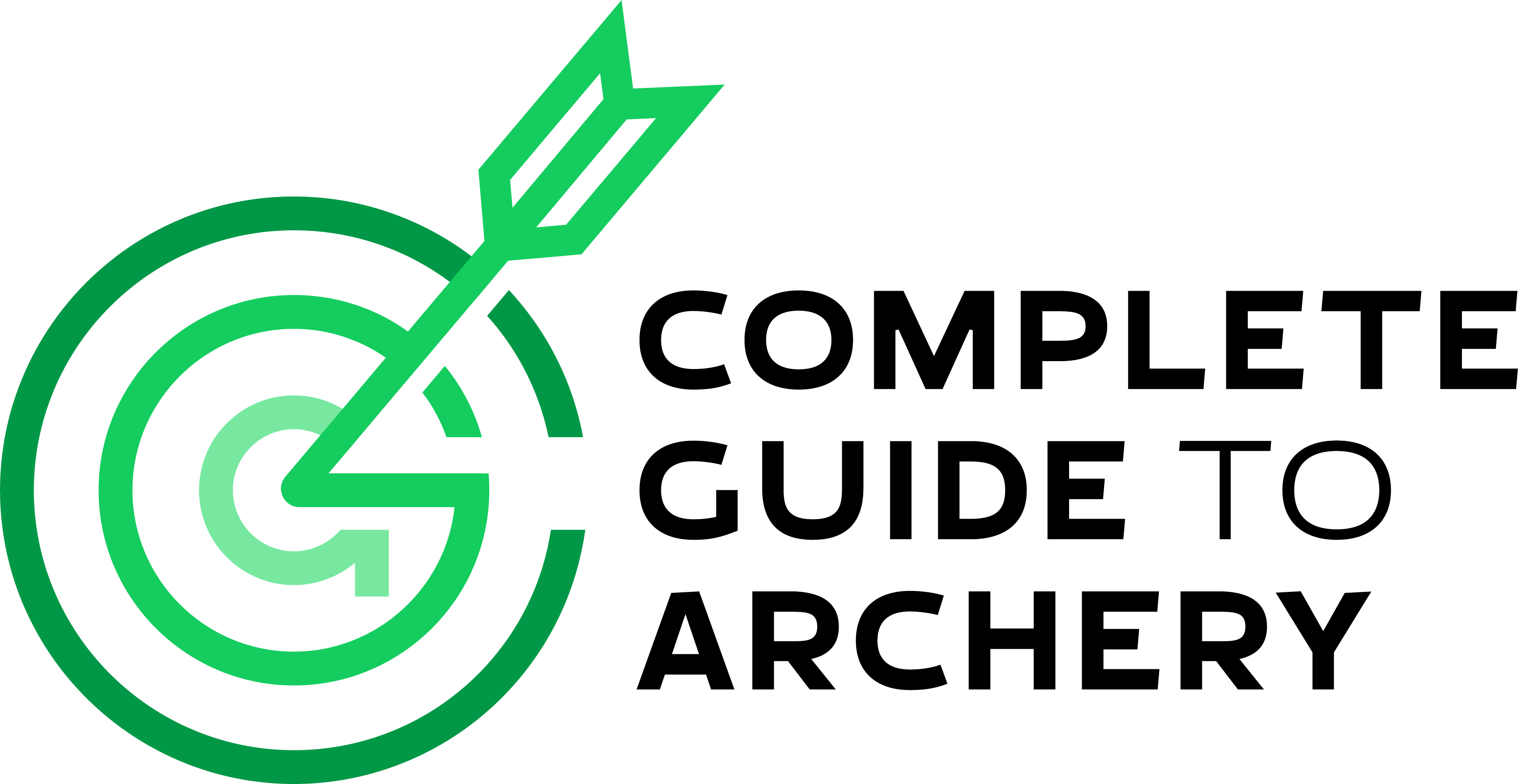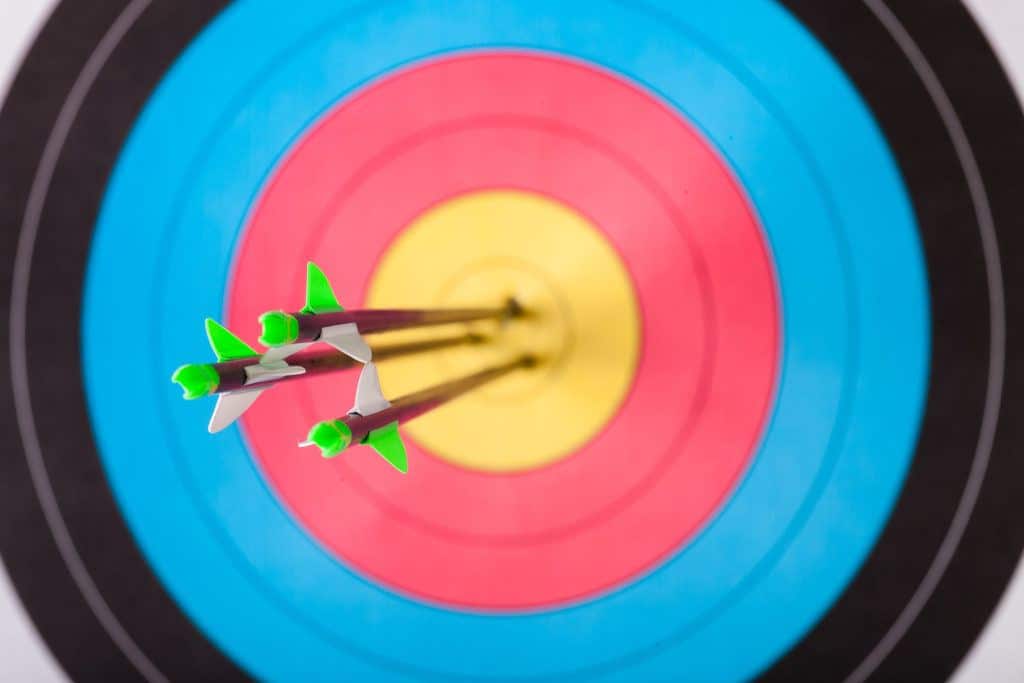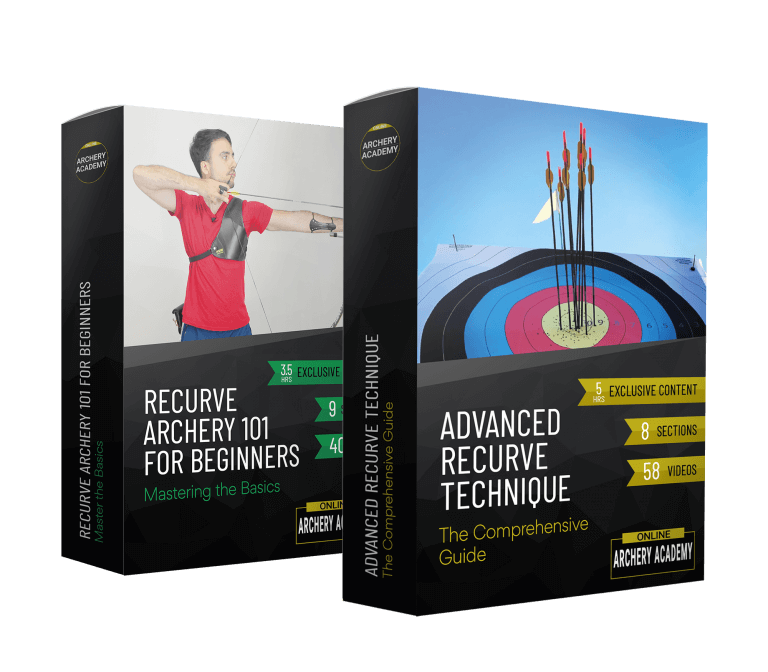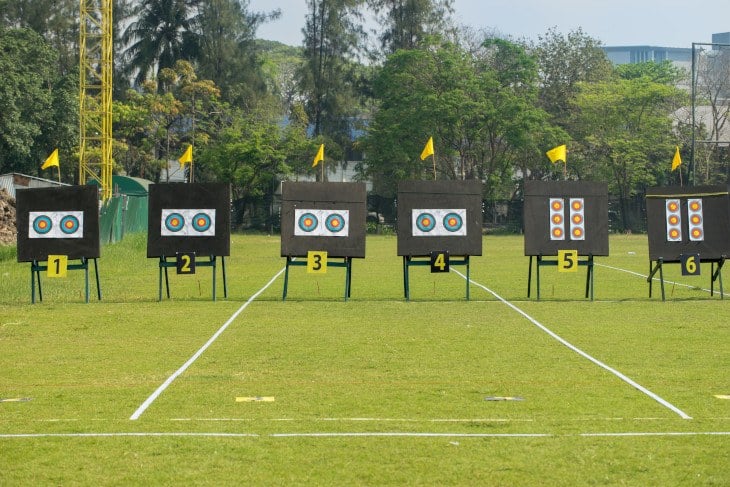If someone told you that simply envisioning your goals would make it more likely you’d achieve them, what would you say?
You’d probably say “That’s ridiculous,” and keep moving. Most sensible people probably would.
After all, life doesn’t work that way—if you want something, you have to fight like mad to achieve it. Worthwhile success doesn’t just fall in your lap—and if it did, all those daydreamers out there would be super-successful, instead of just… well, instead of just being daydreamers.
But believe it or not…

Envisioning success can bring about incredible results, and there are some wildly successful people—from gold-medal winning Olympians to billionaire titans of industry—who swear by it.
There’s also a slew of studies run by professionals in field from neurology to psychology that prove visualization can enhance your results and help you achieve your goals.
Curious? Well, you’re in luck.
Below, we’ll discuss everything you’d want to know about visualization. We’ll start with a step-by-step guide on how to do it, talk about some pitfalls you may run into (and how to get past them), and how to make visualization part of your daily routine, so that every day you’re moving closer to your goals.
For those of you who remain doubters, we’ll present some of the scientific findings on the effectiveness of visualization, and we’ll provide some help on some specific types of visualizations—for athletes, for businesspeople, for artists, and for those seeking to soothe their anxiety (or get a decent night’s sleep).
After all that, we’ll discuss some of famous people—from Olympic athletes to billionaires to famous actors—who have used visualization to out-do their competition and reach unparalleled heights of achievement and fame.
Ready? Let’s get to it, and get you closer to success.
By the way—we’re a website devoted to archery, but this post isn’t about using visualization to achieve your archery goals (although our archery readers should absolutely incorporate this technique into their skill-building). This post is about using visualization to achieve any—no, *all*—of your goals.
Let’s jump in.
How to Visualize: A Step-by-Step Guide
When you get right down to it, visualization is pretty straightforward: it’s the process of envisioning your success. Determine your goals, determine what you need to achieve those goals, and picture it in your mind.
That sounds pretty simple, but there are some rules that separate a visualization from simple fantasy. When done correctly, it can be a powerful technique, but you need to go about it the right way. Here’s what you need to do.
Start at the End
This is the most important thing: know exactly what you want. Start by visualizing your ultimate goal, get as detailed as you can, and understand everything that “success” entails to you. If your goal is to start a successful business, then envision your office, the number of employees you’ll have, the tasks your employees will complete, and so on. Imagine all the details of your life as the owner of a successful business.
This sort of “world-building” is a little more challenging than most people expect, but it’s vitally important. You have to know exactly what you want, and exactly what it will look like. After all, if you don’t know what your goal is, it’ll be impossible to reach it.
Map Out Your Journey
This is the “research” part of your visualization, and it’s absolutely vital to your success. Once you’ve created a very clear and detailed image of success in your mind, take a step back and start visualizing the process leading up to success.
Here’s the rub: in order to visualize the process… you need to know the process!
We’ll give you an example. Let’s say you want to become a bodybuilder. You want to have a physique like famed visualizer Arnold Schwarzenegger (who we discuss below). In order to build your delts and tris and quads etc., would you simply go to the gym and start doing bench presses? Of course not.
There are dozens—hundreds, really—of different exercises you’ll need to perform in order to build your physique, and you’ll need to learn each of them to build those muscles.
After you know all that, then you can visualize doing them perfectly.
So do your research. Learn the steps you’ll need to complete in order to accomplish your goals, and then picture yourself doing them successfully and with perfect form.
Remember when we said that visualization isn’t a simple daydream? We weren’t kidding. A visualization with only a goal is a daydream, whereas a visualization of everything you need to do to achieve your goals is a literally a roadmap to success.
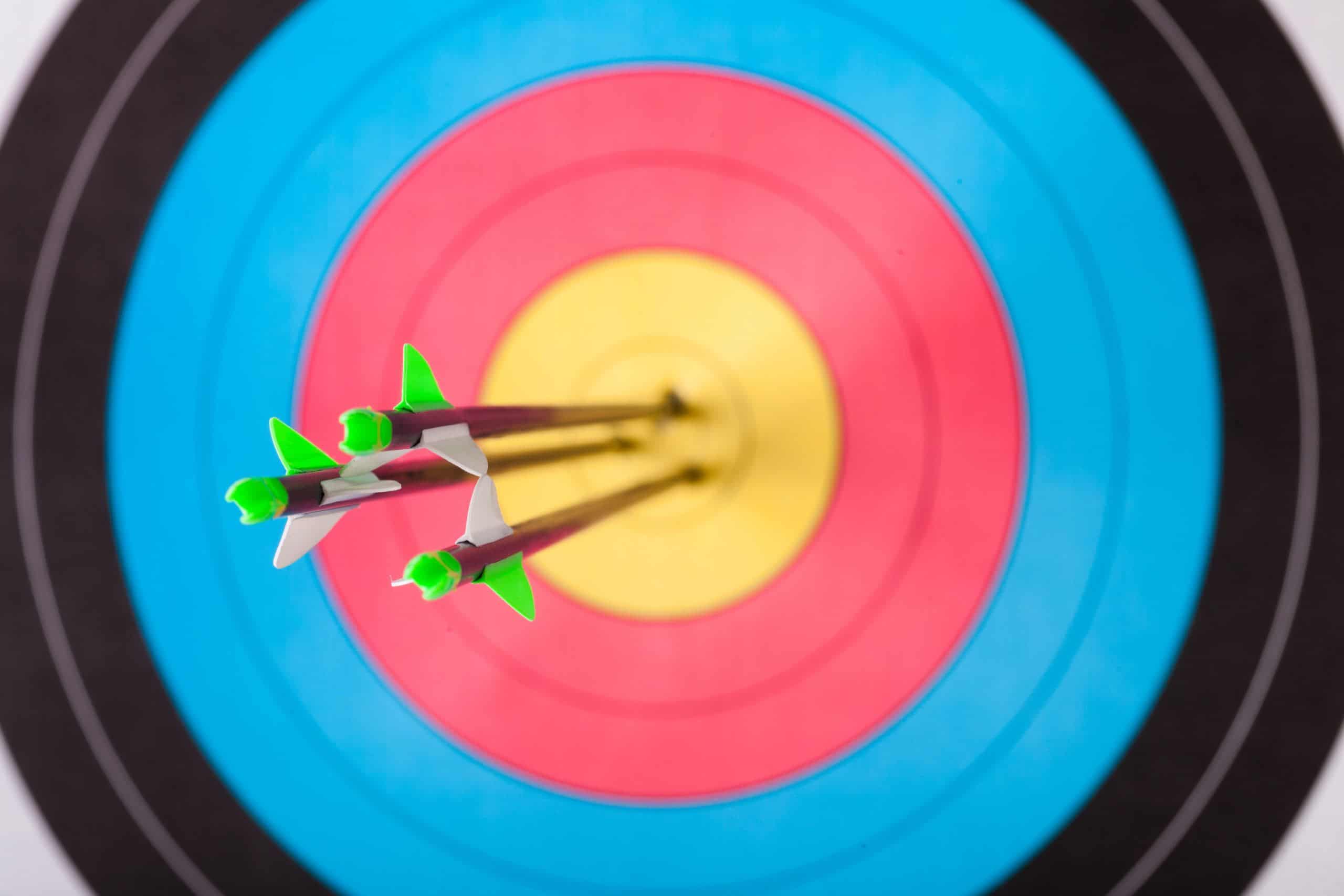
Visualize Consistently—and Set Up a Routine
The more often you practice visualization, the better you’ll get at it, and the more you will reinforce to yourself that achieving your goals is possible. Try to find a time in the day, when you can just close your eyes and visualize both success and the process of reaching it.
Take a look at your schedule, and see where you can designate some time for visualization. This can be in the morning, on your bus-ride to work, during your lunch break, or in the evening before you go to bed. Longer, more in-depth visualizations are better, but even a few minutes—or a few seconds—is better than nothing.
Perhaps the most important aspect of consistent visualization and setting yourself up for success is to…
Choose the Right Environment
The right place to visualize is one that’s quiet and free from distraction. You want to be comfortable and calm in order to fully immerse yourself in your imagery, so a peaceful, calm locale is key.
Finding some alone time can be difficult for many of us—especially if you’ve got kids—so you may need to get creative, and if you’ve got nowhere else to go, a few minutes of visualizing in the shower can do the trick.
Most sources recommend staying away from any kind of music, since it can be disturbing, but if you happen to find a soundtrack that actually enhances your visualization, don’t be afraid to put it on in the background.
As for how you inhabit the space you’ve picked, in most cases, you’ll want to sit in a chair / on the couch / wherever you’re comfortable, *but* you may also want to stand. Some people choose to incorporate subtle movements into their visualizations, and this can be a good option for athletes. Lindsey Vonn, the world-class skier who we’ll discuss later, would often “lean into” her visualizations and she pictured herself speeding downhill.
Break Down the Details
OK, now let’s get to the nitty-gritty. Good visualization practice includes a ton of details, and the more details you can incorporate into your imagery, the better.
Everything you can imagine about the process, and everything you’ll experience, is worthwhile: from your clothes, to the sensation you’ll feel in your body, to the weather, the “feeling” in the room. All that minutiae is important, because it prepares you for events that you may not anticipate otherwise.
Here’s an example. Let’s say you have a lot of anxiety about a speech you have to give. You’re the best man at your brother’s wedding, and you’ll want to give a moving, yet entertaining, toast, in front of… yikes, in front of hundreds of people.
Daunting, right?
You could envision speaking clearly, landing all your jokes, and giving your toast at the end of the speech. That’s a simple visualization, and it’s probably a pretty common one. But it won’t prepare you for what you’ll actually face.
An in-depth visualization would include the following:
> Your feelings of nervousness before the MC/DJ/organizer hands you the microphone
> The feeling of the microphone in your hand—it’s a little heavier than you expect, and it throws you off for a second
> The view of the banquet hall and how large it suddenly looks
> Some of the blank faces you’ll see in a crowd, because people can sometimes look bored, even if they’re actually interested
> Comments and shout-outs from your tipsy friends in the crowd
etc etc etc.
Those are all very likely things you’ll experience while giving your speech, and when you picture all that in your mind, it will allow you to prepare for the unexpected. It also helps to keep the visualization process dynamic, and it builds you “mental muscles” when you do future visualizations.
Your goal should be to use all five of your senses to develop a totally complete image, and if you’re doing your visualization right, you should actually feel some nervousness / excitement / anticipation during your visualization!

That brings us to the next item, which is so incredibly important:
Know (and Visualize) the Hard Parts
This is one of the most important requirements of a good visualization, and if you take anything away from this post, make it this:
You need to visualization all the difficulties, disappointments, and trials in each of your visualizations, and you need to see yourself overcoming them.
New visualizers tend to picture a fantasy, in which execution of their goals is perfect. There are no real challenges in the visualization, just seamless achievement.
Life isn’t usually like that, and success is usually—almost always—marred by difficulties along the way. Your visualizations should include those difficulties, and you should envision yourself overcoming them. In our last example—giving a speech to a crowd at a wedding—you’d picture everything that could go wrong, and you picture yourself dealing with all those problems as they come up.
Here’s another great example of “Know (and Visualize) the Hard Parts.” Lindsey Vonn is a world-class skier, and she is widely considered the best female American skier of all time. She’s won countless awards—her Wikipedia page is kind of ridiculous—and she’s a lifelong, dedicated visualizer.
Before every race, she visualizes success—but pictures all of the turns and challenges of the course in front of her. She finds the aspects of the downhill course that might trip her up / slow her down / injure her, and she envisions success over each of challenges. Her visualizations are not simply her winning—they’re the step-by-step success over every specific obstacle she’ll meet on the course.
When it comes down to it, visualization is about being prepared. You need to know the challenges you’ll face in order to visualize them. Learn everything you can about your goal—and all the challenges you’ll encounter—and visualize success at each of those pain points.

Put it to Paper with a To-Do List or a Vision Board (or Both)
This may be “extra credit” when it comes to visualizations, but it’s a supplemental practice that many successful visualizers incorporate into their routine: either a To-Do list or a Vision Board.
A good To-Do list can be incredibly effective. As you go through your visualization, figure out all the steps you need to finish in order to accomplish your goal, and then record them in a day-planner or in an app on your phone.
An in-depth to-do can almost be a guarantee of success: if you write down every requirement necessary to attain your goals, success is simply a matter of checking off each item on that to-do list.
Not everyone likes To-Do lists, and some instead opt for a Vision Board. A Vision Board is simply a visual representation of your goals, and it can include… well, whatever you want it to! If, for example, it was your goal to hike the Appalachian Trail from start to finish, you could include a map of your route, icons of landmarks along the way, and a picture of the last few steps of the trail. Your Vision Board would be tailored to keep your mind on your task.
The trick to a vision board is to make it visually enticing—looking at it should be motivating—and it should be personal. It can include images of your personal heroes, quotes that are inspiring to you, and if possible, images or photos of your achieving pasts goals and overcoming hardships. You can get as creative as you want with it.
Keep in mind, you can do both—keep a To-Do list and maintain a Vision Board—and plenty of high-achievers do so.
Carry It Out in Real Life
And finally… the last and most important step of visualization is to actually bring the image in your mind to life! Visualization makes you believe success is possible and allows you to envision the process of achieving it, so start carrying out the steps you’ve envisioned as necessary towards reaching your goal.
Start with small things while continuing to visualize every day. It might mean starting to practice or exercise every day, or it might mean making the effort to speak up more at meetings—this totally depends on what you want out of life. Take baby steps until you’re at a full sprint.
Remember that visualization is a process. As you get better at it, you’ll develop your skills and build momentum, and as you do so…
Don’t Stop!
Just because you’ve started turning your vision into a reality doesn’t mean you should stop visualizing! In fact, the opposite is true: you should keep visualizing every day, and the nature of your visualization can slowly change. As you start working towards your goals, the visualization can become more complex or it can move a little further ahead as your goals change and develop.
Success, ideally, should be a way of life—so once you get there… keep going!

If You’re Having Trouble…
That’s to be expected. Visualization isn’t easy, especially when you first start out.
Here are a few tips and reminders that will help you troubleshoot and avoid the common pitfalls of visualization.
Visualize in the “First Person” Point of View
For a visualization to be effective, it has to be done from your perspective.
When you daydream, you can be someone else, or you can be an objective observer in the sky—but that’s not visualization, and it’s not effective.
It’s important that you imagine things from your own standpoint, within your body and through your eyes. If you can see yourself from the outside in your visualization, then you’re doing it wrong. Recalibrate, and start again.
Do Research to Improve Your Visualization
In some cases, it can be very difficult to visualize something because you don’t have any idea what it could be like. How can you imagine being an astronaut if you don’t know what it’s like to be in space or if you don’t have any clue what the training is like?
To make your visualization more realistic you will need to research both what it’s like to be an astronaut, as well as what it takes to become one. Watch documentaries on the topic, read books, listen to interviews, and most important, BUILD EXPERIENCE. Practice tasks in real life, and your visualizations will grow stronger and more reality-based.
Stay in Control
For some people, the hardest thing is to stay in control of their visualization. There is a big difference between visualization and daydreaming, and it can be the difference between success and failure—when we daydream, our mind carries us through experiences willy-nilly and it can often turn to the absurd, irrelevant, or—worst of all—dark and negative. It happens to all us.
Keep your visualization focused on positive, realistic thoughts, and don’t allow yourself to drift into unhelpful fantasies. If you can’t get out of it, then you should…
Talk It Through
Many of us don’t have detailed visual imaginations, and we’re not capable of envisioning actions and sequences in great detail. That isn’t a reflection of our intelligence or our creativity or our capacity for success—and it doesn’t need to hinder your ability to use visualization to achieve your goals.
If you have difficulty to “seeing” your goals, it can be incredibly helpful to narrate your visualization out loud. Describing each step in a sequence, and providing detail and insight as you go along, is a great way to keep your mind on track—and it can be a powerful way to introduce visualizations to your mind, instead of the other way around.
Here’s an example. Let’s say you’re a distance runner, and you want to visualize an upcoming race at a local track. You would find a quiet space where you’re alone, close your eyes and relax, and say out loud, “I’m nervous as I step up to the starting line, but I do my breathing exercises, and I feel myself relax a little bit.
My stomach muscles loosen and then tension in my shoulders lessens. I toe the line, and I explode forward the instant the official shoots the start pistol. I charge forward and elbow my way into positive on the inside lane and my competitors fight for position. I feel some pain in my calves but I fight through it and refocus my mind. Another runner charges in front of me but I…” and so on.
If you’re having difficulty “picturing” your visualization, speak it out loud, and your thoughts will follow.

Once Again: Visualize the Process!
We mentioned this a few times, but we’ll repeat it here: visualization isn’t just about picturing your success (even though that’s obviously important)—it’s about visualizing the entire process.
Once you’ve visualized your goal, that second step of visualizing how you will get there is extremely important! This allows you to actually work through your action plan in your mind, and better prepare you to follow through.
Remember That You’re Not There Yet
Another common pitfall of visualization, especially when it comes to more long-term goals, is that it can give you the same level of satisfaction as actually accomplishing the goal. On the one hand, this is key for improving confidence, but for some it can also negate the need for real-life actions—after all, you’ve already gotten your reward in your head, and you feel great about it!
For visualization to keep its purpose, make sure to focus just as much of your mental energy on visualizing practice and struggle as you do on visualizing the reward. You also need to check in with yourself after you’re done visualizing to remind yourself that in reality you haven’t reached your goal yet.
Lastly—and importantly…
Don’t Freak Out if Real Events Don’t Match Your Visualizations
Because… they probably won’t! Life just doesn’t work out that way, and even the most in-depth visualizations are often far different than the events you’ll experience in real life.
It’s pretty common, actually. You may have run through your visualization a thousand times, only to find that when you actually dive into the task—you finally step up to the mic to give that speech, or lunge forward and start running that race, or take the leap and start that business—it’s not at all how you pictured it.
And that’s totally OK. You can expect that, even. Your visualizations were not to create an exact reality that will happen, but to prepare you for success and ready your mind for it. No matter how different your real-life experience is, your visualization has prepared you for success.
Speaking of success, we should probably talk about the ancillary benefits of visualization—even aside from the realization of your goals.
The Overall Benefits of Visualization
The obvious aim of visualization is to achieve your specific goals, and that’s why most people engage in it.
But there are some tangential benefits that are worthwhile on their own, and they’re positives regardless of whether you’re a creative, an athlete, a businessperson, or just a regular-old guy or gal trying to improve his/her life. Visualization helps us achieve our goals, no matter what they are, by encouraging us in a few different ways:
Increased Confidence
Visualization is extremely effective for building confidence because it changes our perception of ourselves on the subconscious level. If you are dealing with low self-esteem or impostor syndrome, visualization fights those issues very effectively. Here’s why:
The brain doesn’t know how to distinguish between success in real life and the success experienced in a detailed visualization, so if we’ve already experienced success through visualization, then we can start truly believing in ourselves as a successful person. Visualization doesn’t simply convince us that if we try we can achieve, but it tricks the mind into believing that we already are the person who achieves. This distinction is profound because it transcends belief or rationality, instilling a level of confidence that can be unshakeable.

Enhanced Motivation
When done correctly, with due attention paid to visualizing not just success but also practice and struggle, visualization can be an extremely motivating practice that will prepare and excite you for achieving your goals. It can neutralize doubts and get you motivated to problem solve and change things in your life.
If you’re a person who loses interest or focus on your goals, visualization may be able to keep you on track.
Better Planning Skills
Visualization helps organize the mind and predict the steps necessary to reach a goal. Sometimes it can reveal potential challenges or steps that you wouldn’t have thought about otherwise. It’s a process that makes planning much easier, both for the long term and short term, especially if you keep good records of what you’ve visualized with the help of a daily planner or to-do list.
Improved Ability to Practice
You’ve probably heard the phrase, “practice makes perfect.” It’s true, and it’s difficult to overstate the importance of practice. If you want to get better at something, you need to practice.
In other words–practice is pretty darn important, and improving your ability to practice can get your closer to achieving your goals.
Visualization can help you improve your skills by being a real form of practice. Just by imagining yourself practicing a task in vivid detail, you can actually improve at that task. It may not be quite as good as literal experience, but it’s still incredibly powerful.
A great example of this is Natan Sharansky, a human rights activist imprisoned by the Soviet Union in the 1970s. He kept his sanity in the grueling Soviet prison system by playing chess in his head while he was locked up, and he credits the practice with helping him stay sane. After his release, he went on to become a politician in Israel and later defeated chess champion Garry Kasparov in a simultaneous exhibition.
Practice makes perfect indeed!
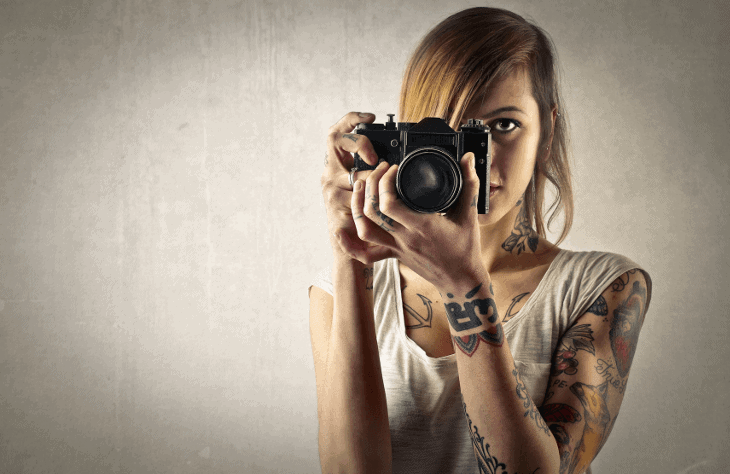
The Science of Visualization
For those of you who are stillllllllllllllll unsure about the benefits of visualization, this section is for you.
In recent years, there’s been a great deal of pseudo-scientific ideas like “aligning energy” or “attracting success,” that are… well, that are ridiculous. They basically say, “Want something hard enough, and the universe will make it appear for you” through some sort of law of attraction or something, and fall in your lap.
And, sadly, that’s just absurd. To quote that old lady, “That’s not how this works! That’s not how any of this works.”
It would be easy to lump visualization into that category of feel-good nonsense, but fortunately, there’s solid evidence that shows that visualization really does work. Neuroscientists, psychotherapists, and other health professionals and academics have all shown that visualization has real, concrete benefits that can be backed up with science.
Academic studies on mind-body techniques have been able to back up its effects, and perhaps the most famous study on visualization showed that simply visualizing flexing a muscle was enough to actually activate the body and promote muscle growth to a notable level.
Another research study conducted with basketball players showed that visualization can improve accuracy. The study had athletes attempt free throws either without practice, with visualization practice, with physical practice, and with a mix of both. The result? Combining physical practice with visualization worked best.
So, why does this occur? What makes visualization a useful supplement to practice?
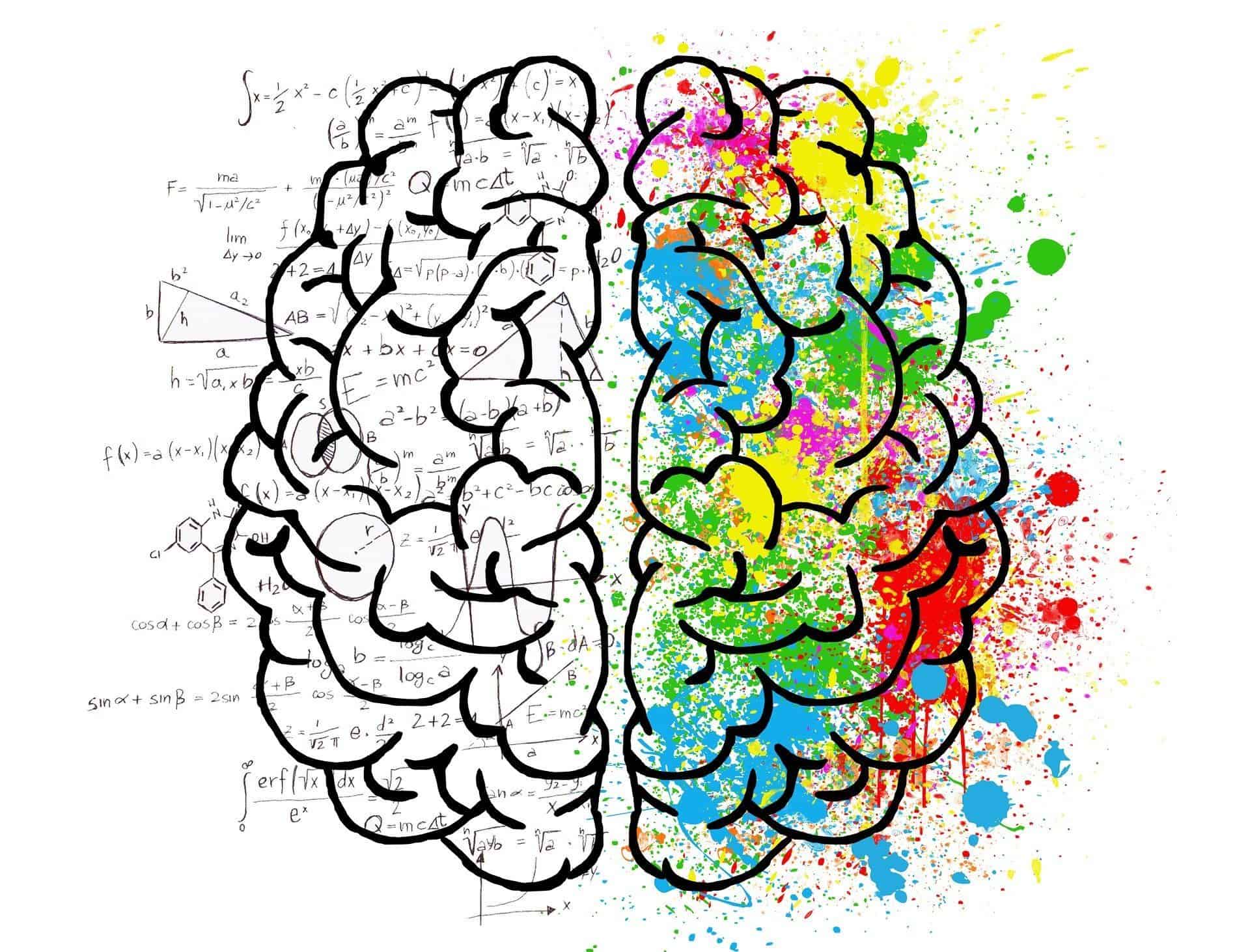
According to an article published in Frontiers in Public Health, the reason why thinking and visualizing is so powerful is that our cognitive and motor processes are powerfully integrated. What we think impacts our body and what our body does impacts our thinking through complex neural networks, and the body can’t always distinguish what is real and what is imagined—especially when the visualization is very thorough.
in other words, visualizing ends up training the body and the mind to believe that reaching goals is possible, and it also prepares the body for the actions necessary to achieve. From a mental health perspective, it can shift a person’s self-image in a way that raises their self-esteem and helps to eliminate harmful doubts but without downplaying rational thinking or real-life challenges.
Visualizations for Specific Tasks
Visualization can be used for literally any goal you want to achieve, but there are a few groups of people who seem especially drawn to it. The visualizations below can be good options.
Visualization for Athletes
Competitive sport, with its focus on form, consistent challenges, and measurable results, is a perfect match for visualization. Athletes in a wide range of different sports have discovered that visualization can improve their performance in a significant way, and discussion of Olympic athletes who use utilize visualization is pretty well-known.
Here’s something truly interesting—and truly worthwhile: we’ve already mentioned how simply visualizing physical activity can give a real, physical boost to the muscles, but according to multiple case studies, athletes can also gain from visualization when it comes to precision and performance anxiety.
If pre-event jitters are something that plague you, that can be great news. Some sports require brute strength, and pre-event jitters can help performance—a distance runner, for example, can re-focus those jitters into forward motion—but for precision sports, those jitters can be ruinous.
And that’s most sports, really, from basketball / baseball / football, to focus-based sports like archery, tennis, and golf. By imagining successful practice in thorough detail, athletes can actually envision and improve their precision.
Once again, imagining the details is very important. You need to visualize everything from your stance to the temperature in the room to the different muscles activated. You can start out visualizing everything in slow motion to ensure you can fit all of the details in there, but eventually, you should be able to visualize everything happening in real-time.
Some professionals suggest that when visualizing athletes should sit and be comfortable, while others suggest that standing and even mimicking the actions you are visualizing is more helpful. You can experiment with different settings and stances when visualizing to see what works best for you.
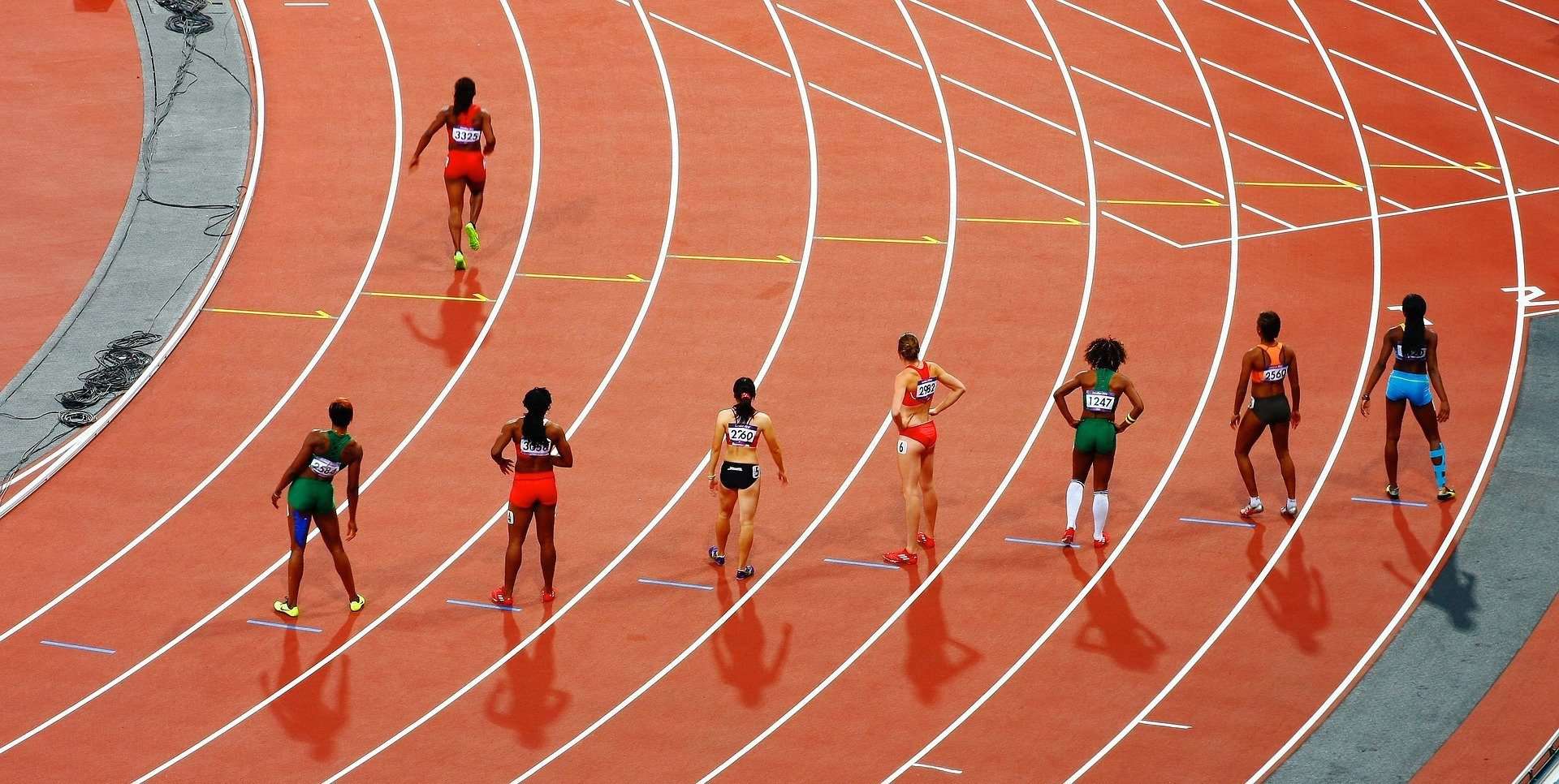
Visualization for Creative Pursuits
Visualization is a great practice for artists from all kinds of disciplines, because it helps both with developing skill and growing creatively. Even if you don’t work in an intrinsically creative profession, knowing how to generate ideas, stretch your imagination, and bring visions into reality can still have positive effects in nearly every area of your life.
Where skill is concerned, we’ve already covered how mental practice through visualization is registered by the body as real practice and it can actually improve performable skills. If you imagine yourself putting paint on a canvass, playing your musical instrument, or doing a dance routine in vivid detail, that will have a positive effect on your abilities in real life, even if it’s not a replacement for concrete practice.
To grow creatively you will need to focus your visualization slightly differently, and you have permission to, at least momentarily, break away from visualizing in first person. For creative visualization it’s often better to create an image from an objective perspective. This technique of putting together an object or composition depends on details, just like goal-based visualization. You can start out small, and then slowly let your idea become more complex and detailed.
Eventually, it’s still important to come back to your own point of view, so you can also put together a plan of action for how you will create your piece of art from a more practical perspective. What kind of brush strokes will you use? How will you move your fingers over the paper? How will you move across the dancefloor?
Many artists do this instinctually by first planning out their projects through mental imagery, constructing their creation in their mind’s eye before ever putting pen to paper. While this is easiest to understand in relation to drawing or painting, visualization should involve all five senses so composers, perfumers, chefs, sculptors, choreographers, and creatives in all other mediums can also benefit from it.

Visualization for Anxiety
Therapists often use a technique similar to visualization called guided imagery to help patients deal with all kinds of mental health struggles, and especially anxiety.
Traditional visualization techniques like the ones we’ve described earlier in the article work particularly well for performance anxiety. According to one study, students who visualized giving a speech reported less performance anxiety when it came time to actually give the speech, especially when compared to other students who didn’t visualize.
If you’re anxious about asking someone out on a date, asking your boss for a raise, or performing a dance routine, visualization can definitely help prepare you and ease your anxiety. In the long term, it might even help ease anxiety tied to low self-worth, since it can be an exceptional self-esteem booster.
Meditative visualization can be helpful when one is actively anxious, and it’s more about bringing the anxious person back to a state of serenity or at least reducing anxiety. According to research, much in the same way that being in nature can ease anxiety, visualizing being in nature can also help!
When you’re stressed, close your eyes and imagine yourself in a natural environment like a forest, a beach, or perhaps next to a creek. It is better to choose a place where you’ve been before. Just like with goal-based visualization, it’s important to activate all of your senses and to try and imagine your natural environment as vividly as possible. Doing this, even for just a couple of minutes, can ease your anxiety in the moment.
It’s important to remember that while visualization can be an aid for those dealing with anxiety, it’s not a replacement for professional help or medical intervention. Instead, it can be a supplement to professional help that can boost your wellbeing alongside psychotherapy and/or medication.
Visualization vs. Meditation
There’s some confusion between these two activities, and they’re worth quickly addressing. Someone watching from the side might not be able to tell which one it is you’re doing, but there are some major differences between the two practices.
To start, the goals are very different. The goal with meditation is to reduce emotions and to bring the mind to a state of calmness, by making a person focus on their breathing and current physical state. With visualization, the goal is to drive a person to action by focusing on positive emotions.
As a result, the physical effects of visualization and meditation are different as well. Visualization can sometimes make the heart race, while with meditation the opposite should be true and the body should feel totally calm by the end.
Both meditation and visualization can be helpful at different times of the day or at different periods of life. When you need to slow down and feel calm, meditation is better, but when you need to propel yourself into action and boost your confidence then visualization is the practice to choose.
Examples of People Who Have Used Visualization to Achieve
If you’re wondering whether your efforts at visualization will be worthwhile and you need a little push, you may want to keep in mind the following examples. These are people who—love them or hate them—have used visualization to achieve incredible things.
Oprah Winfrey
The media mogul, actress, talk show host, philanthropist, and billionaire Oprah Winfrey is one of the best representations of a “rags to riches” story and the American dream. In an interview with Larry King, Oprah credits the concept of visualization with a large part of her success.
“I ate, slept, and thought all the time about [the book] The Color Purple,” she explained, and then months later, she got a call from Steven Spielberg asking her to star in the film. “The way you think creates reality for yourself.”
“There are other factors going on,” she clarifies, “but you really can change your own reality based on the way that you think.”
Jim Carrey
Speaking of Oprah, it was actually on her show that Jim Carrey revealed to the world how visualization was part of his journey towards becoming a famous comedian and actor. Back when he was just starting out in his career and still struggling, he would picture his success, which he credits with eventually bringing it to him.
“I would visualize things coming to me that I wanted,” he told her. “I had nothing at that time, but it made me feel better… I do have these things, they’re out there, I just don’t have a hold of them yet!” Famously, he even wrote himself a $10 million paycheck that he was able to “cash” 5 years later when he got his role on “Dumb and Dumber”.
Arnold Schwarzenegger
Austrian bodybuilder-turned-actor-turned-California governor Arnold Schwarzenegger is a celebrity known by just about everyone. What many don’t know is that he is also an avid practitioner of visualization. He isn’t totally free of scandal or that everyone would agree with politically, but what is undeniable is that he knows how to achieve his goals.
In his book, Total Recall, Schwarzenegger describes visualizing his ultimate reward back when he was just starting his fitness journey: “I pictured myself high up on the pedestal, trophy in hand.” However, his visualization doesn’t stop there, and as he kept progressing in life his goals may have changed but his process of positive, consistent visualization never stopped.
If you think about his journey—from a small town in Austria, to world-class bodybuilder, to actor, to governor—it’s an incredible testament to the power of positive visualization.
Michael Phelps
As a child, competitive swimmer and Olympic gold medalist Michael Phelps had a hard time concentrating. However, competitive swimmers must be able to focus in order to succeed in the water.
According to his coach Bob Bowman, practicing visualization techniques over the years has allowed Phelps to focus his mind and excel as a swimmer. “For months before a race Michael gets into a relaxed state. He mentally rehearses for two hours a day in the pool,” Bowman says.
“He sees himself winning. He smells the air, tastes the water, hears the sounds, sees the clock.” In other words, Phelps engages all of his senses as part of his intense visualization process.
Another notable element is that Michael Phelps doesn’t only visualize winning or succeeding, but he also visualizes potential challenges, like if his swimsuit ripped or if his goggles broke.
Bowman compares Phelps’ brain and mental process to a computer program: “He will go through scenarios… What if things don’t go well? He has all of this in his database.”
Kayla Harrison
Kayla Harrison is am American judoka and MMA fighter who has won multiple world championships as well as Olympic medals. As part of her practice she often relies on visualization.
“Every night I visualize myself winning the Olympics,” she told the Washington Post before the 2016 Olympics in Rio. Clearly, her visualization technique worked because she went on to win the gold medal for her weight class that year!
Visualization and You
As with anything, you get good at what you practice. If you find visualization cumbersome at first, stick with it. It will get easier, and the activity can be an incredibly powerful tool on your way to success.
And… who knows? Maybe someday your name will be among the incredibly people we just discussed!
Good luck, and all the best to you and your future goals!
